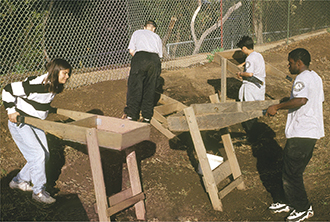Figure 14 These Americorps students are looking for artifacts at the San Diego Presidio—a fort that was built in 1769. As the students sift dirt through a screen, small objects buried in the dirt collect on the screen.
Applying Concepts How could changing the size of the holes in a screen change the number of objects found?

Using Properties to Separate Mixtures
Some properties can be used to separate mixtures.  Filtration and distillation are two common separation methods.
Filtration and distillation are two common separation methods.
Filtration
One way to make a pot of tea is to pour hot water over loose tea leaves. Some compounds in the tea leaves, such as caffeine, dissolve in the water. Yo can separate the hot tea from the loose leaves by pouring the mixture through a strainer. Using a strainer is a type of filtration. Filtration is a process that separates materials based on the size of their particles. Particles of the compounds that dissolve are small enough to pass through the strainer, but the tea leaves themselves are too large to pass through the strainer. The drip method of brewing coffee also uses a filter to separate the brewed coffee from the coffee grounds.
The students in Figure 14 are using a wire screen to locate small objects buried in the sand at an archaeological site. Particles of dirt are small enough to pass through the holes in the screen, but objects such as broken bits of pottery are too large to pass through the screen.
Distillation
How can yo separate the parts of a solution when all the particles in a solution are small enough to pass through a filter? Sometimes distillation can work. Distillation is a process that separates the substances in a solution based on their boiling points.
One practical use of distillation is to provide fresh water for submarines. Most submarines can store only enough fresh water to last about ten days. Each submarine has equipment that can convert seawater into fresh water. The water is heated until it changes from a liquid to a gas. The gas is cooled until it changes back to a liquid, which is collected in a separate container. Boiling can separate fresh water from seawater because water has a much lower boiling point than the compounds dissolved in seawater. These compounds are left behind in the original container.

How can loose tea leaves be removed from a pot of brewed tea?





